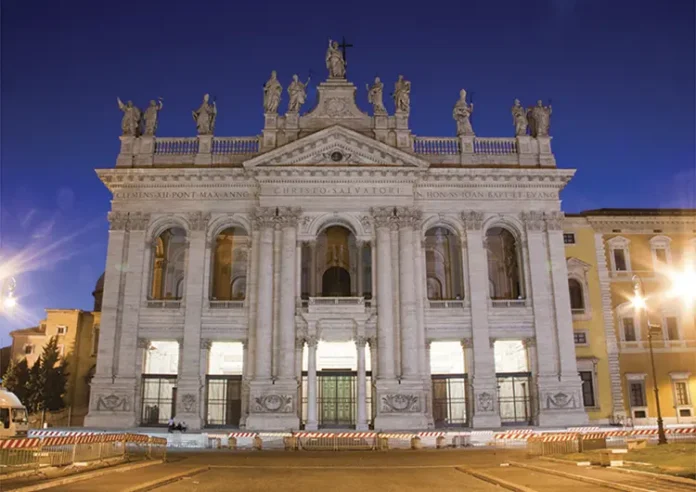November 9 – Dedication of the Lateran Basilica
Just as people receive Baptism, sacred buildings are also “baptized” or, to use more appropriate terms, consecrated or dedicated to God. If there is a ritual to bless family homes, why should there not be something similar for buildings intended for divine worship?
The Temple of Jerusalem – erected to house the Ark of the Covenant and to be a place of blessing for the people of Israel – was built and dedicated by King Solomon amid supernatural wonders and grand ceremonies (cf. 2 Chr 5-7).
In our era, the emperor Constantine donated the place where the Popes established their seat of government, a combination of palace and cathedral. Its dedication – the first in Church history – occurred seventeen centuries ago, on November 9, 324. On that occasion, Pope St. Sylvester entitled it Holy Saviour, a name completed in the 13th century with that of St. John the Baptist and St. John the Evangelist. It is now known as the Papal Basilica of St. John Lateran.
There, remarkable graces poured forth upon Romans and pilgrims, and important councils were held. Its walls also housed precious relics and works of art of inestimable value. But not everything in its history was splendid: the basilica experienced earthquakes, pillaging, fires and terrible neglect during the period the Popes resided in Avignon. Like the Church itself, the Basilica endured storms, and like her, always remained standing, majestic and maternal.

However, to consider the essential aspect of this feast, let us focus our attention on a teaching of St. Paul that is undoubtedly much more significant than the dedication of a temple, however venerable it may be: “Do you not know that you are the temple of God, and that the Spirit of God dwells in you? If anyone destroys God’s temple, God will destroy that person; for the temple of God, which you are, is holy” (1 Cor 3:16-17).
The profound reality is that the material construction of a temple symbolizes the Church, the Mystical Body of Christ and the holy people of God, built with living and chosen stones: the souls of the baptized.
Thus, theology, history and allegory come together to sing the glories of the Lateran Basilica, mother and head of the churches of Rome and the whole world.
One last reflection, of a pastoral nature, is in order. Today’s Gospel (cf. Jn 2:13-22) tells us that Jesus, with a whip in His hands, purged the Temple of Jerusalem, which had become a house of commerce.
And our souls… are they not in need of purification?
With sacramental absolution – never with a whip – the Lord is pleased to forgive us in Confession, and with the Bread of Life He sustains us in our life of faith. Having been “Consecrated” by Baptism, purified by Reconciliation and strengthened by the Eucharist, we will truly be living stones of the Church. ◊


